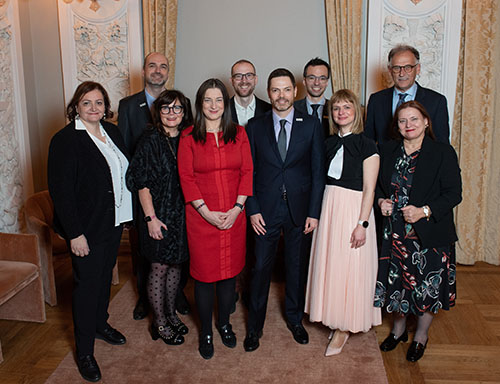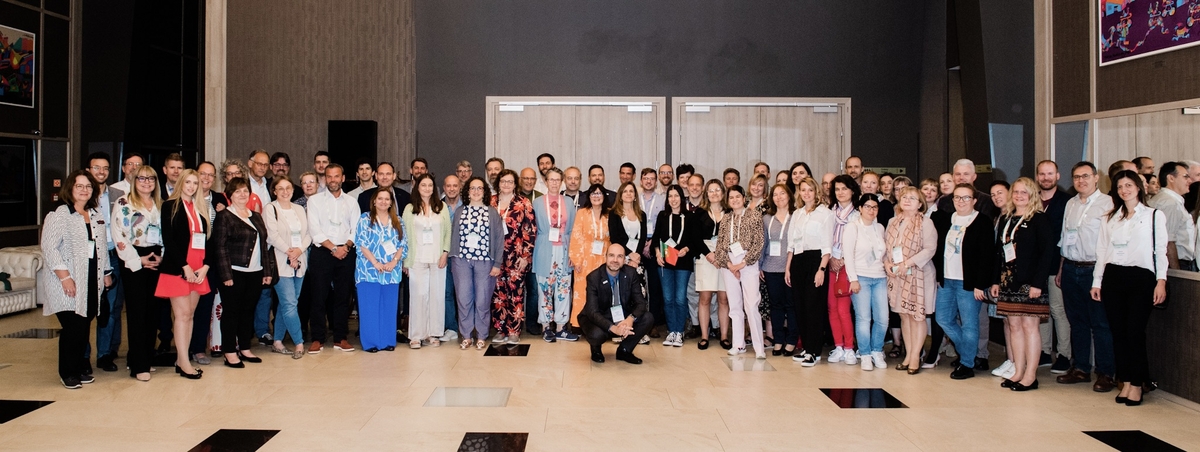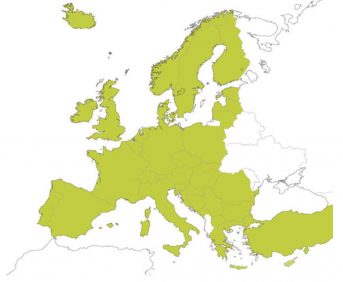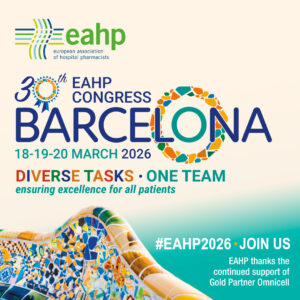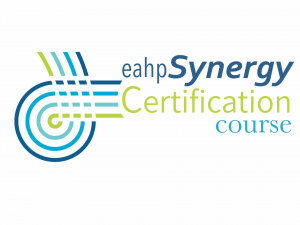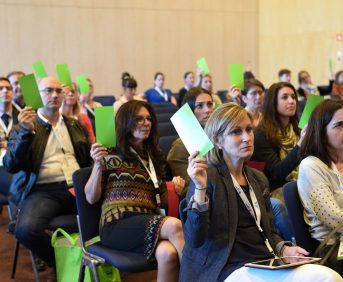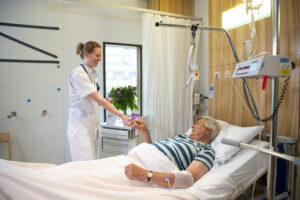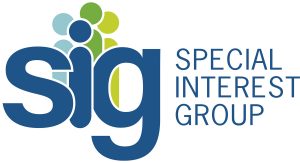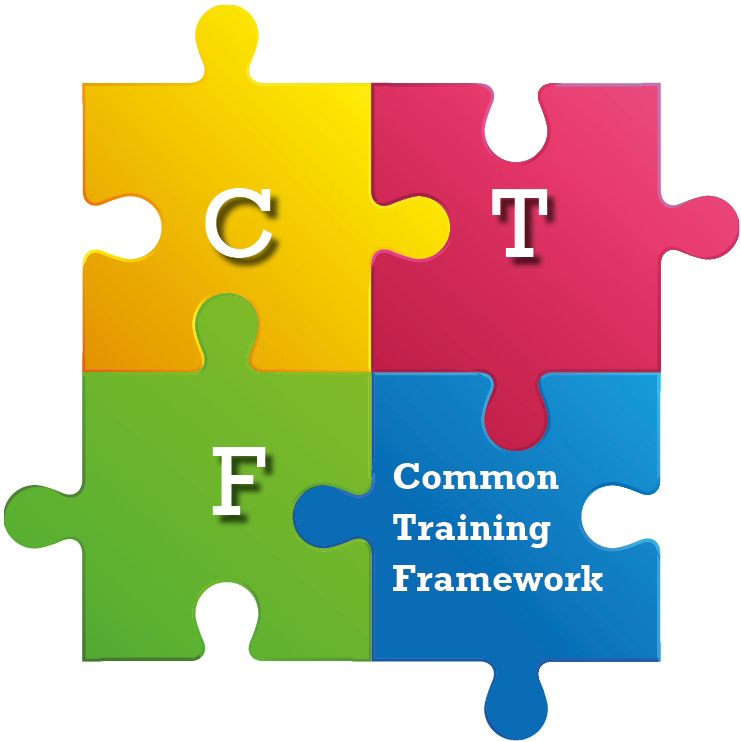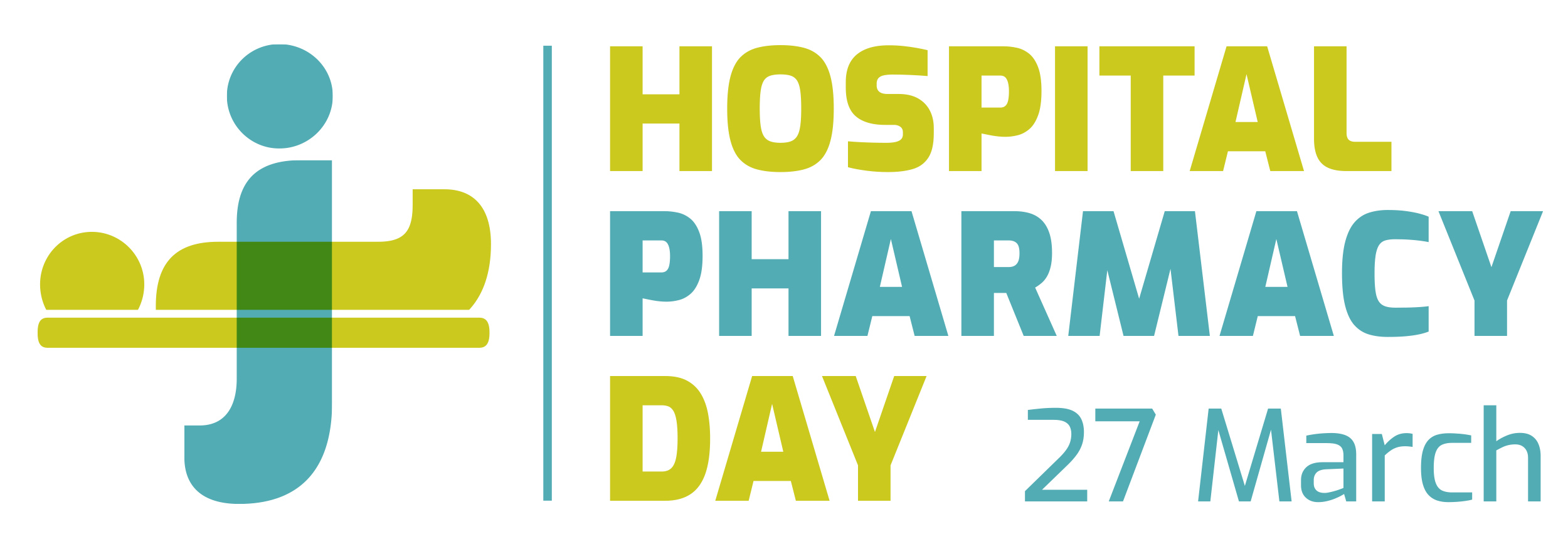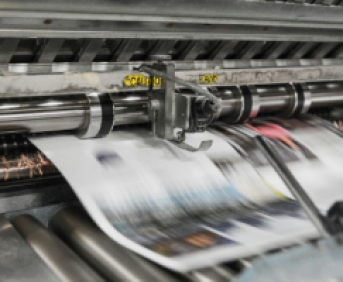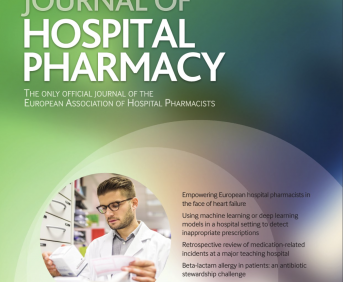DEVELOPMENT OF AN INFORMATIC SYSTEM FOR THE FOLLOW-UP OF PATIENT-REPORTED OUTCOMES FOR PEOPLE LIVING WITH HIV
Pdf

European Statement
Patient Safety and Quality Assurance
Author(s)
Feijoo-Vilanova P (1,3), Cid-Silva P (1,3), Mena de Cea A (3), Sanclaudio-Luhía AI (3), Luaces-Rodríguez A (1,3), Caeiro-Martínez L (1,3), Gómez-Costa E (1,3), Fernández-Diz C (1,3), Torres-Pérez A (1,3), Martín-Herranz I (1,3), Margusino-Framiñán L1,3
1. Pharmacy Department.
2. Informatic Department.
3. Research Group of Hospital Pharmacy. Biomedical Research Institute A Coruña (INIBIC). A Coruña University Hospital (CHUAC), Sergas. A Coruña University (UDC).
Why was it done?
An informatic program was developed for the clinical follow-up of clinical and patient-reported outcomes (PROs) of people living with HIV (PLWH) on antiretroviral treatment (ART).
What was done?
Pharmaceutical follow-up and outcomes research of PLWH must incorporate innovative solutions that allow the data optimization from electronic medical record (EMR) and PROs data, since traditional manual methods are insecure and inefficient.
Our objective is to describe a software (SiMON-PRO: Intelligent Monitoring System; acronym in Spanish) based on EMR data digitization and the PRO telematics data registry, and to describe the data collection procedure since June 2023.
How was it done?
A multidisciplinary group of clinicians (pharmacists and infectologists) transferred the following software requirements to the hospital’s informatic engineers: automatic incorporation of patient data from the EMR; generation of events related to clinical occurrences and alerts regarding the efficacy and safety of ART; documentation of pharmacist consultations; data analytics by business intelligence for investigational purposes.
Regarding the data capture procedure, during each visit to the outpatient clinic at hospital’s pharmacy department, a record is created that incorporates the latest digitized EMR data and the PROs data completed by patients on a mobile device, which is transferred to the software through a cyber-secure Wi-Fi connection and then to the EMR.
What has been achieved?
A software solution, SiMON-PRO, structured into six sections, was developed. 1/demographic data; 2/ epidemiology; 3/events; 4/analytics; 5/ART; 6/PROs questionnaires: about quality of life (EQ-5D-5L, HAT-QoL, MOS-HIV), chronic treatment acceptance (ACCEPT) and injection tolerance (PIN).
The software allows outcomes to be exported to the usual operating systems through Big Data and Business Intelligence. It also automatically generates alerts for assisted prescription validation and produces reports for exporting to the EMR.
What next?
SiMON-PRO is an innovative solution for the clinical follow-up and research of PLWH, increasing the quality, efficiency, and safety of healthcare. The following steps include the use of the data, events and alarms generated for better pharmaceutical care of PLWH and, gradually, design this software for other pathologies.
RELOCATING A UNIVERSITY HOSPITAL’S INJECTABLE CHEMOTHERAPY PREPARATION PROCESS TO A MOBILE UNIT: A CHALLENGE MET!
Pdf

European Statement
Production and Compounding
Author(s)
K.LEROUET; M. DELAMOTTE; F.VITET. S.CRAUSTE-MANCIET; A.LEBRETON; F.LAGARCE
Why was it done?
Our Chemotherapy Reconstitution Unit (CRU) needed to replace its two double workstation isolators and high efficiency particulate air filters, taking the unit out of service for six weeks. With 40,000 injectable chemotherapy treatments performed each year, outsourcing was not an option. We had to find a solution to temporarily relocate the activity to a new area within our facility.
What was done?
Our aim was to ensure continuity of the manufacturing process for injectable anticancer drugs in accordance with Good Preparation Practices in a temporary CRU.
How was it done?
Eighteen months ahead of schedule, we set up multidisciplinary working groups consisting of pharmacists, pharmacy technicians, biomedical and technical service staff and health care managers.
Inspired by the few french hospitals that had already carried out this project, we studied the process and the choice of space and equipment required. We also drew up procedures and a backlog schedule.
What has been achieved?
Twenty-three work sessions of 1 hour were organised. We chose a chemo-truck (ModuGuard®), with three workstations inside two positive pressure isolators. We acquired new equipment to adapt to the spaces created specifically for this project (transport crates, walky-talkies, operating room gowns). We planned the qualification of the mobile grade D controlled area and isolators. The production flow was rethought, with extended production hours and more human resources. Our production was divided into 4 zones with different tasks: tray preparation and pharmaceutical validation, chemotherapy preparation, pharmaceutical release and preparation dispatch. Good communication between the different areas was essential to the success of our project. In comparison to the reference process, no additional non-conformity where noticed. We communicated with the care units many months ahead to anticipate logistic issues.
What next?
The overall feedback from the teams was good, thanks to the cohesiveness that was created, although staff were tired. No adverse events were reported, although occasional delays in preparation were noted. Anticipation of needs and day-to-day adaptability were essential to the success of this project. A budget of €80,000 was required to complete our project. This organisation allowed us to maintain a level of production equivalent to our CRU. This publication is intended to help inform healthcare organisations undertaking similar projects.
RISK ANALYSIS OF THE ADMINISTRATION CIRCUIT FOR ANTICANCER PREPARATIONS USING THE C-LOG® SYSTEM
Pdf

European Statement
Patient Safety and Quality Assurance
Author(s)
S. Arraki Zava (1), A. Kandel (1), S. Herioux (1), C. Monpagens (1), L. Capayrou (2), C. Tailhades (1), V. Grenouilleau (1), S. Ferrari (1)
(1) Pharmacy Department, Pau Hospital Center, 64000, France
(2) Quality Department, Pau Hospital Center, 64000, France
Why was it done?
In the current context of rising production of anticancer preparations (AP), our hospital has adopted the C-log® tool to improve the safety and traceability of AP administration.
What was done?
Evaluation of the integration of the C-log® solution into the AP administration circuit in the oncology day ward.
How was it done?
From June to September 2024, a risk mapping (RM) using FMEA (Failure Mode and Effect Analysis) for the AP administration circuit was conducted by a multidisciplinary team (quality and IT departments, hospital pharmacists, pharmacy technicians, logisticians, nurses, and healthcare managers). After evaluating the circuit, failures, their causes and effects were identified. A residual criticality score was calculated (C=F*S*M) for each failure, considering its frequency F, severity S, and level of control M, and classified into 3 categories: acceptable (C<4), vigilance (4≤C<10), unacceptable (C≥10). An action plan was developed with corrective measures (CM).
What has been achieved?
RM identified 39 failures: 34 acceptable, 4 unacceptable, and 1 classified as vigilance. First unacceptable risk was related to disruptive patient episode identifier (PEI) scanning due to wristband opacity. Another came from mismatches between the wristband PEI and that on the AP label, when patients had multiple administration days with different PEIs for each, while AP labels only contained the first PEI. Third one is related to nurse’s lack of training which led them to miss important administration information on the software. The last unacceptable risk was increased time to trace all protocol administrations (checkpoints, premedication, AP…). The vigilance risk was due to the inability to trace anticipated premedication intake on the software.
CM includes the use of clearer wristbands and permanent ID number instead of PEI solving unacceptable failures. We decided to use C-log® for AP administration traceability only, while CHIMIO® remains to trace all other protocol administrations. New training sessions for nurses will be scheduled.
What next?
RM highlighted C-log’s contribution to reinforce identity vigilance. It demonstrated the importance of nurse’s acceptance of the software and therefore the need for sufficient training time on the tool. Focusing on an entire protocol administration traceability, C-log® couldn’t replace CHIMIO® yet. Once all the CM are implemented, the RM will be re-evaluated to assess their impact.
DEVELOPMENT AND IMPLEMENTATION OF A POST-AUDIT IMPROVEMENT PLAN IN A PARENTERAL NUTRITION PRODUCTION UNIT
Pdf

European Statement
Production and Compounding
Author(s)
F. Gaume, A. Ifrah, S. Vrignaud
Why was it done?
In 2023, an evaluation of professional practices (EPP) targeting the risk of microbiological contamination was carried out in our parenteral nutrition production unit. This EPP took the form of an internal observational practice audit and revealed several non-conformities (compliance with disinfectant exposure time, identification of right times for change gloves and performance of surface sampling) requiring the implementation of a structured and collaborative improvement plan.
What was done?
From January to October 2024, an improvement plan in 3 phases has been performed.
How was it done?
Phase 1 – Audit results: Presentation to unit technicians by pharmacists, followed by a discussion session.
Phase 2 – Development of improvement actions: Brainstorming sessions with the team to generate ideas for corrective actions / Evaluation of proposals collected according to 6 criteria (speed, relevance, feasibility, motivation, safety and cost) using an impact matrix / Creation of a structured action plan based on the selected proposals.
Phase 3 – Implementation of actions: Creation of working groups / Monitoring of the improvement process / Development of a plan to assess the effectiveness of actions.
What has been achieved?
Phase 1 – Audit results presentation: 2 sessions were held in January 2024 with the 13 technicians of the unit. The discussions allowed us to discuss the non-conformities observed during the audit and ensured understanding of the challenges identified.
Phase 2 – Development of improvement actions: 2 sessions were held in March 2024 /10 improvement actions were listed and evaluated. 4 actions were considered as priority, 4 as recommended and 2 as non-priority / Setting up of a Gantt chart to give an overview of the actions to be carried out, their estimated duration and deadlines.
Phase 3 – Implementation of actions: implementation of the 4 priority actions and the 4 recommended actions / Creation of a quality document concerning glove changes and modification of 8 quality documents / Consideration of ways of evaluating actions: quick audit, questionnaire, etc.
What next?
As a follow-up to this work, a questionnaire will be prepared for the technicians to assess the overall approach. A quick audit focusing on glove changes will be introduced soon to assess the impact of the improvement plan.
EXPREM PROJECT: TRANSFORMING THE PHARMACEUTICAL EXPERIENCE FOR MULTIPLE SCLEROSIS PATIENTS
Pdf

European Statement
Clinical Pharmacy Services
Author(s)
Ranz Ortega P; Martín Barbero ML; Escudero Vilaplana V; Lobato Matilla E; Carrillo Burdallo A; Del Barrio Buesa S; Herranz Alonso A; Sanjurjo Sáez M.
Why was it done?
The EXPREM project aimed to enhance the patient experience for individuals with Multiple Sclerosis (MS) undergoing pharmacotherapeutic follow-up at our hospital.The project involved designing a Patient Journey Map,conducting patient interviews at key touchpoints,and identifying strategies to improve service quality and patient satisfaction.
What was done?
Due to the chronic and complex nature of MS,patients often fase challenges throughout their healthcare journey.The fluctuating symptoms and long-term treatment regimens require frequent interactions with healthcare providers,making the patient experience a critical component of disease management.This project aimed to identify gaps in pharmaceutical care,improve service efficiency,and create a more patient-centered healthcare environment.
How was it done?
The project was conducted in five phases from January-April 2024:
1.Defining the pharmaceutical care process:a detailed map was designed to outline the pharmaceutical care process,including:before arriving at the pharmacy service(PS), patient visit and post-visit
2.Patient Interviews:three MS patients receiving treatment—one newly diagnosed,one with stable chronic treatment,and one with a recent medication change—were interviewed by a pharmacist in semi-structured,open-ended conversations to capture their perceptions and experiences with the Pharmacy Service
3.Direct Observation(SAFARI Method):the pharmacist working group simulated the patient experience to understand what patient hear,see and feel during their journey, identifying areas for improvement in the facility
4.Designing the Patient Journey Map:information from interviews and observations was used to create the Patient Journey Map,highlighting key areas for enhancement
5.Proposals for Improvement:based on the findings,specific actions were proposed to improve the patient experience
What has been achieved?
The project identified areas for improvement, such as:
Before arriving at PS
•The need for a digital appointment management system to reduce waiting times and and improve medication dispensing efficiency.
•Improvements in the physical infrastructure ensuring privacy,better signage,accessible facilities and developing health education programs,such as audiovisual health material for waiting times.
Patient visit and follow-up
•Expanding the use of health apps,videoconsultation to improve real-time communication and ensure the efficacy and safety of medication at home
•Home medication dispensing to save time and reduce costs for patients
What next?
The methodology will be shared with other pharmacy services for broader implementation and the impact of these improvements on patient satisfaction and health outcomes will be systematically evaluated
Assesing cold chain compliance for biotherapy drugs in a university hospital’s medical departments
Pdf

European Statement
Patient Safety and Quality Assurance
Author(s)
AMINE BAYEN, OUMAIMA KHARKHACH, HICHAM EL HORR, LHOUSSAIN ZARAYBY, SANAE DERFOUFI
Why was it done?
It has been observed that within the gastroenterology, neurology, internal medicine, rheumatology, and dermatology departments, there exist inconsistencies and disparities. These include extended transportation times averaging 8 minutes, a lack of isothermal bags for transportation, and refrigerators not connected to the main hospital generator.
Strict adherence to storage guidelines is crucial, as any breach in the cold chain could compromise the drug’s therapeutic effectiveness, increase the risk of adverse effects, and lead to significant financial losses for healthcare institutions.
What was done?
Ensuring optimal storage and transportation conditions for biotherapy drugs in various medical departments within a university hospital by assessing and improving cold chain compliance.
How was it done?
Implemented corrective actions and recommendations have been primarily directed towards minimizing transportation duration and procuring thermal bags for all departments handling biotherapy products. These initiatives encompass enhancing staff awareness in the cold chain process through sensitization campaigns and regularly evaluating refrigerator temperatures. Moreover, a strategic plan is underway to establish their connectivity to the generator system in the near term.
What has been achieved?
A notable reduction in the transportation time of biotherapeutic drugs has been achieved, decreasing the average duration from 8 minutes to 6 minutes. Additionally, the widespread adoption of thermal bags across audited departments has substantially bolstered the stability of biotherapeutic drugs, mitigating temperature fluctuations and enhancing patient safety. Moreover, our efforts in sensitising medical and pharmaceutical staff within these departments have yielded a significant increase in awareness and adherence to stringent cold chain protocols.
What next?
The inconsistencies and disparities identified during the assessment of the biotherapy drug cold chain within our hospital suggest a potential lack of adherence to procedural standards. This situation poses a considerable risk to patient safety, warranting further investigation and action.
Our focus will extend beyond the cold chain assessment to evaluate other pharmaceutical procedures. Specifically, we will investigate the adherence to autoclave sterility cycles for medical devices and the robustness of the preparation process for oncology medicines.
Acceptance of pharmaceutical interventions in a resuscitation unit
Pdf

European Statement
Clinical Pharmacy Services
Author(s)
Xabier Larrea Urtaran, Elisabet Nogué Pujadas, Alba Couso Cruz, Guillem Pla Escriva, Carol Batlle Perales, Carla Subirana Batlle, MIreia Bruguera Teixidor, Carmen Ortí Juan, Anna Dordà Benito, Mireia Vila Curris
Why was it done?
The aim of the study is to analyze pharmaceutical interventions (PI) carried out by a hospital pharmacist in a Resuscitation Unit (RU) in terms of number and degree of acceptance.
What was done?
The integration of a pharmacist in the critical care unit allows optimizing pharmacotherapy, prevent s medication errors in critical patients and working in a multidisciplinary methodology .
How was it done?
It is a prospective study carried out from 1 August 23 to 15 September 23 on weekdays, in which patients with a minimum of 48 hours of admission were included, recording the PIs conducted during the daily clinical activity of a pharmacist at the RU. The variables collected were: age, sex, type of PI, medication involved, acceptance of PI and day since admission. The percentage of acceptance of the PIs and activity indices (PI/patient, PI/days and day of PI in respect to admission to the RU were calculated. For the descriptive analysis, the means and standard deviation (SD) were used.
What has been achieved?
80 patients were included during a total of 31 weekdays, mean age ± SD of 59.6 ± 18.4, 46.3% were women (n=37). Patients had 8.9 ± 3.0 drug prescriptions and 3.8 ± 2.0 infusions and on-demand drugs. There were 5.9 patients admitted per day in the RU .107 IPs were carried out, with activity indices of 1.3 IP/patient, 3.45 IP/day and 3.21 IP days compared to admission to the RU.
The groups of drugs with the highest IP were: anti-infective agents for systemic use (n=57), blood and hematopoietic organs (n=17) and nervous system (n=15).
The interventions carried out were: adjustment of anti-infective therapy (n=21); pharmacokinetic adjustment (n=18); administration (n=17); conciliation (n=16); dose adjustment by glomerular filtration rate (n=16); dose adjustment (n=10); duplicity (n=5); no need (n=2); compounding (n=1) and allergy (n=1).
The degree of acceptance of the IP was 92.5% (n=99).
What next?
The acceptance of PIs in the RU is very high , being greater than 90%, with an activity of more than 3 PIs per day, reinforces the integration of a hospital pharmacist in a multidisciplinary team to ensure patient safety and improve the pharmacotherapeutic profile. It is necessary to have a pharmacists integrate in the RU.
Securing the management of experimental product in investigator services in case of non-nominative dispensing: a risk based approach
Pdf

European Statement
Patient Safety and Quality Assurance
Author(s)
Mélanie Hinterlang, Mona Assefi, Pauline Glasman, Delphine Brugier, Meriem Charfi, Fanny Charbonnier-Beaupel, Marie Antignac, Carole Metz
Why was it done?
Clinical trials in critical care sometimes demand swift inclusion and administration, often occurring at any hour of the day or night. To enhance patient care, the experimental drug may be provided in a non-nominative manner directly from the pharmacy unit to the care unit for storage before any inclusion as a stock. This dispensing pathway is considered less secure than the conventional named dispensing but can be necessary. The objective of this risk analysis for this dispensing process was to identify the risks, determine the number of them with unacceptable criticality, and propose actions to reduce criticality of these risks.
What was done?
A risk analysis of non nominative dispensation of experimental drugs process was conducted to streamline, secure, optimize, and standardize this dispensing process.
How was it done?
Following a preliminary investigation, three pilot services were chosen: surgical intensive care, post-interventional recovery room (SSPI), and cardiology. The Failure Mode, Effects, and Criticality Analysis (FMECA) method was applied to the non-nominal dispensing circuit of experimental drugs from reception at the pharmacy unit to the administration of the drug to patient. Investigators, clinical research associates, nurse, and pharmacists participated.
What has been achieved?
Following the FMECA, 281 risks were identified. The majority were either acceptable (123 or 44%, 110 or 39%, 147 or 52%) or tolerable (139 or 49%, 148 or 53%, and 130 or 46%) for the intensive care, SSPI, and cardiology services, respectively. Unacceptable risks numbered 19 (7%), 23 (8%), and 4 (1%) for intensive care, SSPI, and cardiology services, respectively. The process identified as most critical for all three services was communication. After risk prioritization, a plan comprising 17 actions was implemented.
What next?
This risk analysis demonstrated that control over the non-nominal dispensing circuit is achievable. Once the actions are in place, a reduction in criticality is anticipated due to a decrease in the frequency. Theoretically unacceptable risks are now at 0%. In the long term, this project has the potential to participate to improve the care of patients enrolled in emergency clinical trials and boost research in the concerned units.
Development of a new method for risk assessment related to management of clinical trials in hospital pharmacy: classification of protocols by risk index (ρ) and development of strategies for errors’ minimization
Pdf

European Statement
Patient Safety and Quality Assurance
Author(s)
Giulia CANCELLIERI, Piera POLIDORI
Why was it done?
Hospital pharmacist provides all management of investigational medical product(IMP), i.e. its conservation, distribution, return and destruction. However, each clinical trial involves different methods of managing the drug: this can mislead the pharmacist who has to manage multiple trials at the same time. With the aim of minimizing errors that may arise from the simultaneous management of different clinical trials, we have developed a method to classify clinical protocols by “risk index”.
What was done?
With the aim of minimizing errors resulting from management of clinical trials in hospital pharmacy, we have developed a method to classify experimental protocols into low-moderate-high risk(risk index). For each of these categories, standard procedures were then outlined in order to minimize the occurrence of any errors.
How was it done?
In order to determine risk index(ρ) we have identified all risks related to IMP’s management: pharmacological risk(φ), dependent on pharmacological characteristics of IMP; technological risk(α), if drug should be compounding; risk related to number of patients enrolled(np); risk inherent to the protocol(π), i.e. whether protocol involves placebo, or randomization, etc. These risks were then related through the formula created by us, ρ=φ+(α*np)+π: protocols are defined low-risk if ρ<50, moderate-risk if 51<ρ151. For each risk index, standard procedures were outlined in order to minimize risks, i.e.(for high-risk) inclusion of at least four pharmacists in “Delegation of Responsibilities Log”; scheduling monthly meetings with trial’s Monitor; dispensing of IMP with supervision by at least two pharmacists; etc.
What has been achieved?
We applied this method to 45 active trials in our hospital. For 3/45(6,7%) protocols, φ>75 because IMPs are carcinogenic; instead, 26/45(57,8%) protocols, involve IMP’s compounding; finally 29/45(64,4%) protocols are randomized and 14/29(48,3%) of these involve use of placebo. By applying aforementioned formula, we found that 3/45(6,7%) protocols are low-risk, 32/45(71,1%) moderate-risk, 10/45(22,2%) high-risk. For these 10, standard procedures were applied, to improve the safety of patients enrolled in a clinical trial.
What next?
We promote use of this method in other clinical centers, because we believe it can be a valid tool for risk minimization. Finally, we hope that we will receive numerous feedback from these centers to further improve the proposed method.
Analysis of quality indicators in the compounding area through a mobile application
Pdf

European Statement
Patient Safety and Quality Assurance
Why was it done?
To identify improvement opportunities in the Pharmacy Compounding Area through the analysis of indicators obtained from a traceability App.
What was done?
In 2022, a mobile application (App) was designed and implemented to facilitate the traceability of preparations compounded in the Pharmacy (parenteral nutrition, chemotherapy and other individualized sterile preparations). In addition, the analysis of data registered in the App has provided valuable information about the compounding unit performance.
How was it done?
Monthly reports from May to December 2022 were analysed, focusing only on chemotherapy preparations. The indicators selected were: the average number of monthly preparations, weekly workload distribution, daytime distribution of compounded preparations, preparations returned to the Pharmacy, percentage of treatments prepared on the same day of administration, and percentage of preparations compounded after the scheduled administration time.
What has been achieved?
An average of 139 chemotherapy preparations per day was recorded. The daily distribution highlights that Thursdays and Fridays are the busiest days with the 45% of the total weekly preparations. Furthermore, the morning shift carries out most of the compounding work, with 79% of the preparations being compounded before 3 PM. This information might be useful to the management team to better distribute tasks and resources. Data analysis indicates that 62% of the preparations are compounded in advance, while the remaining 38% are prepared on the same day of administration, which is also valuable information to organize the compounding workflow. On average, 59 preparations were returned per month. Finally, we found that 8.1% of the chemotherapy drugs were prepared with a median delay of 47 minutes from the expected time of administration. All these items are currently being monitored as quality indicators in order to find the way to minimize them.
What next?
The analysis of data recorded in the App provides us valuable management indicators for organizing work in the preparation area.
Tracking these indicators serves as a quality tool for the area and helps us identify opportunities for improvement.
